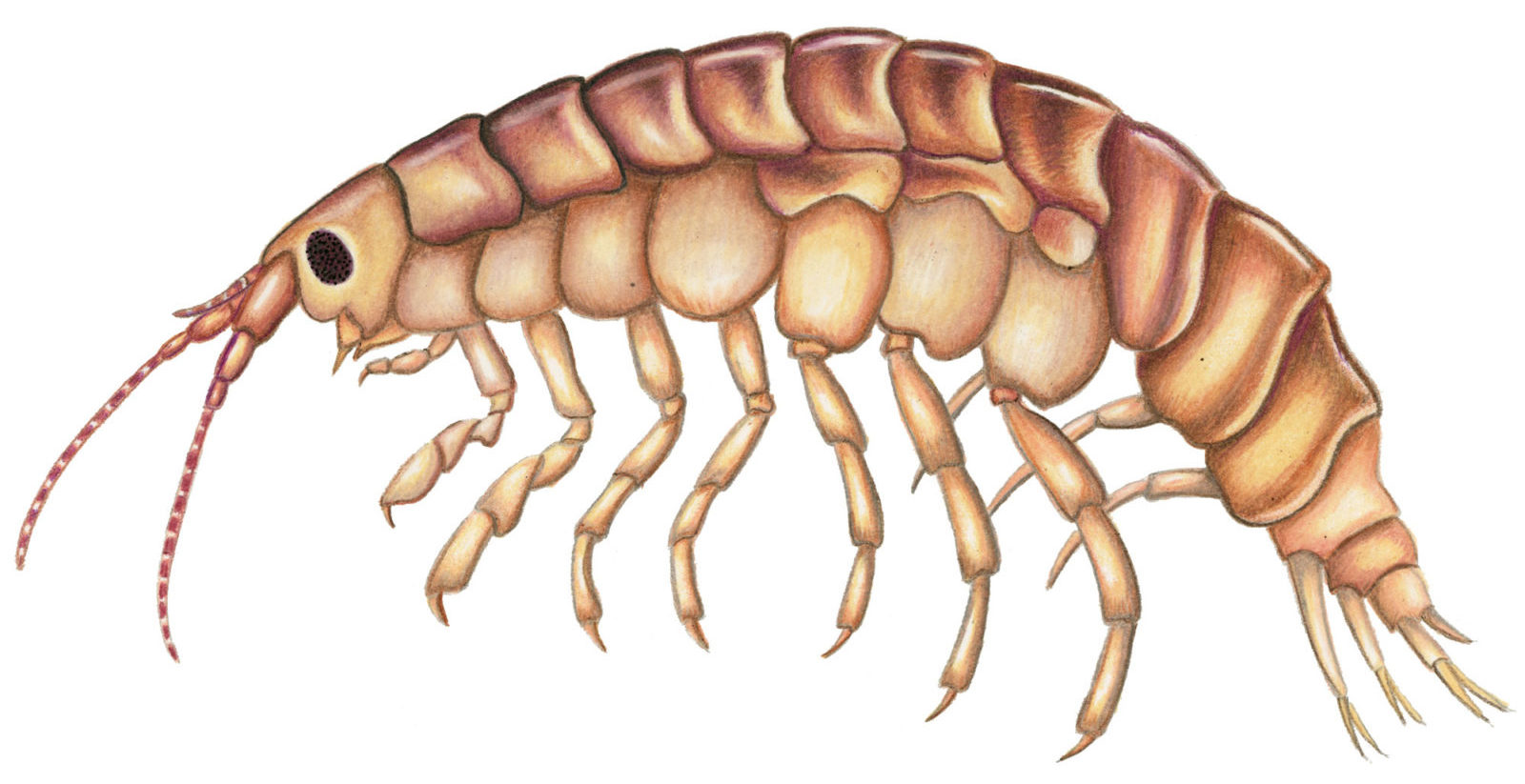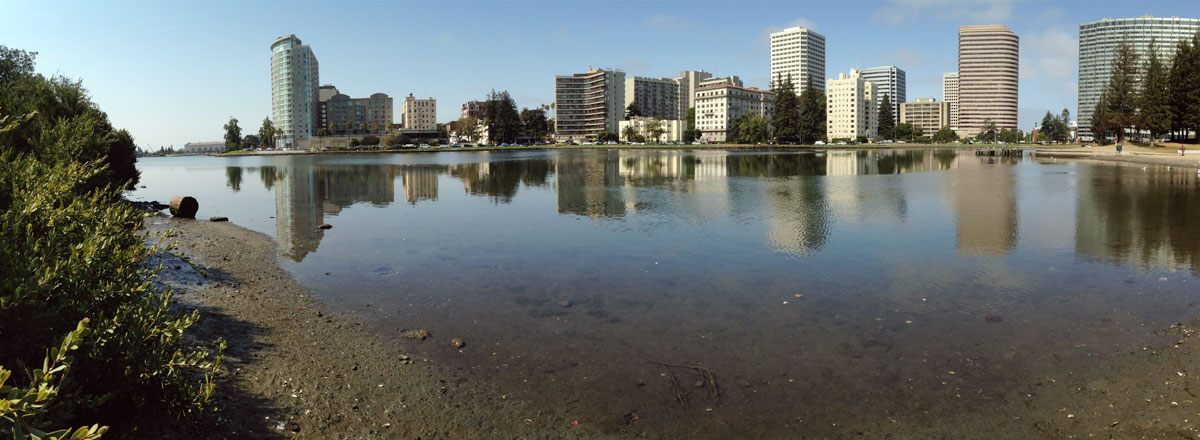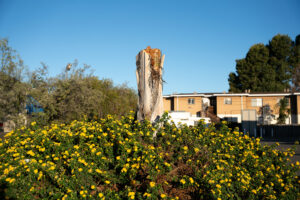
ON A WARM SEPTEMBER AFTERNOON IN 1962, a 14-year-old boy named Jim Carlton scrambled down through thick brush onto the exposed muddy shoreline of Adams Point on Lake Merritt. The small beach was quiet, hidden by the curve of the point from the boathouse to the east and the bandstand to the north. The family picnic Carlton had left behind faded into the whispering ripples of the lake and the smell of bay mud. Something underfoot went crunch. Carlton stopped and knelt down for a closer look. Resting on the beach was what looked like a crown of crumbling white rock. He stuffed it into a bag to examine at his Oakland home.
“My mother,” Carlton likes to say now, “relegated it and me to the basement.” A few days later, Carlton visited the small nature center at the lake edge, where cormorants and pelicans rest in the continent’s oldest wildlife refuge. The white rock “crown,” he discovered from a glass display, was a mass of calcified tube worms identified as from the “South Seas,” which had somehow crossed the Pacific Ocean to land on the shore of Lake Merritt. That was the first fascinating find. The second was that living around the tube worms was a small hopping crustacean.
The crustacean was the size of a pillbug, and brownish-orange. It had a hunched back, round black eyes, and long antenna. It looked something like a half-inch long land lobster. Carlton didn’t know what it was, and neither did anyone at the nature center. There were lots of them, though, hopping around at Adams Point. Carlton collected a few to show to the experts, and one day he caught a bus across the Bay Bridge and then rode the N-Judah streetcar to Golden Gate Park, clutching a small box with his hopper. At the California Academy of Sciences a zoologist identified it as an amphipod, a kind of non-hard-shelled crustacean, but scientists there couldn’t further distinguish it among the world’s 9,500 amphipod species. They suggested he try the Smithsonian.

CARLTON’S INTEREST IN THE LAKE had increased the more he explored it. He began taking regular water quality measurements, busing over to Merritt College where a zoologist would let him use a refractometer to measure salinity. He devised his own suction device for collecting mud animals. The walls in the basement filled with aquaria, jars and vials, and he began corresponding with a wide range of taxonomists. Carlton would pick up a critter at the lake, box it up, walk it down to the Grand Lake post office, and mail it out to experts around the world, marked as from the “Lake Merritt Biological Survey.” He began to get letters back: “Dear Dr. Carlton…” (He says he quickly wrote back to correct the assumption and explain that he was still a teenager.) He didn’t realize how professional he appeared until a researcher replied to one of his letters asking if he had any postdoctoral positions available.
The expert at the Smithsonian couldn’t identify the hopper, and suggested Carlton mail it to the world’s leading authority on beach-hopping amphipod crustaceans, Edward L. Bousfield of the National Museum of Canada in Ottawa. Bousfield didn’t know what it was, either, and proposed to Carlton that it might be a new species. Bousfield did know that whatever the species was, it wasn’t like anything else in North America and therefore almost certainly not native to Lake Merritt. He just couldn’t say where it was from, or how it had managed to arrive at Adams Point, under the foot of a 14-year-old mud explorer.
In 1967, Bousfield and the 19-year-old Carlton — representing himself as from the “Natural Science Center, Oakland, California” — published a paper in the Bulletin of the Southern California Academy of Sciences assigning the thing the name Orchestia enigmatica. (In a taxonomic re-shuffling in 1982, Bousfield moved it into the genus Transorchestia.)
It has been a half-century since that paper came out. The hopper still does not have a common name. It still has not been found anywhere else on Earth. And it still hasn’t moved (so far as anyone knows) beyond its 200 yards of beach. You can go down today to the notch in the heart-shaped Lake Merritt, slide down the muddy embankment through the overgrown myrtle trees to the edge of what Carlton calls the “black mayonnaise” lake mud, pick through marine debris and find the hoppers. Basic questions about what they eat, how they live, and when they reproduce remain unanswered, and yet they persist. “It still remains a bit of a mystery,” Carlton says. “It would be a lovely master’s thesis.”
Carlton, now 68, still likes to check on the hoppers every few years. Inspired by his find, and by the many other weird animals he collected around the lake as a teenager, he went on to a decorated career in marine biology at Williams College in Massachusetts and the college’s Maritime Studies Program in Mystic, Connecticut, where he studied introduced species and how they are spread around the globe. In a widely cited article in Science in 1998, Carlton and bioinvasion expert Andrew Cohen labeled San Francisco Bay “possibly the most invaded aquatic ecosystem in the world.” From the 1960s to the 1990s, they estimated, a new species arrived in the Bay every three months. Introduced species made up 97 percent of the organisms and 99 percent of the biomass in parts of the Bay, they found. Transorchestia enigmatica, like many other expats, is as much at home here as anyone else. “We just haven’t finished the story,” Carlton says. “We have species in San Francisco Bay like Transorchestia enigmatica that need to be tracked down in their homeland, or we need to even find their homeland at all.”
Lake Merritt, a natural tidal lagoon extending from the Bay, is like an “accidental zoo,” Carlton says. Things from all over the world come to Oakland, and like it, and put down roots. Origins are a greater challenge in taxonomy than you might think: Linnaeus invented the scientific classification system we use today in the mid-1700s, by which point European ships had been mixing species around the globe for centuries. Linnaeus identified many species as European that modern taxonomists recognize clearly are not. “We often talk in university-level ecology and evolution classes how fine-tuned species are to the environment, and the evolutionary process that allow them to tune into predators and prey,” Carlton says. “But you can transport species to places where they were never tuned in and they can do well. It’s fascinating on so many levels.”

TRANSORCHESTIA ENIGMATICA PROBABLY ARRIVED sometime in the late 1800s or early 1900s, Carlton thinks, most likely from Chile. (Its closest known relative is a Chilean beach hopper, Transorchestia chiliensis.)
To try and better nail down its origin, Carlton spent time talking to renowned historian Karl Kortum at the San Francisco Maritime Museum. The vast majority of aquatic introduced species arrive via ship: attached to the hulls, packed in with freight, or mixed in with ballast. Kortum directed Carlton to oral histories from the lumber ships that once carried Bay Area timber to Chile, and then returned full of Chilean solid ballast — sand and rock from Chilean beaches, the exact habitat of his amphipod. He thinks enigmatica rode along on one of those return trips. “I’m convinced if we made an expedition to Chile we’d find it,” Carlton said recently. Although, he added, “there’s a tiny possibility we’d find it in New Zealand as well.”
The science funders of the world have not lined up to support a Chilean expedition solely to establish the origin of an anonymous beach hopper. In the absence of such proof, and based on the fact that as far as anyone knows the hopper only lives on this one small beach on Lake Merritt, one of Carlton’s colleagues at the Smithsonian once considered briefly the idea of listing it as endangered.
Carlton, who retired from teaching in 2015, has traveled much of the world but not yet been to Chile. In the meantime, what to make of this little creature that as far as science knows lives only on about 200 meters of lagoon-edge beach? What to make of its persistence on Adams Point, and its absence everywhere else? At what point in a globalized world does the distinction between native and nonnative, resident and occupant, become meaningless?
“In a deeply urbanized place in California, with millions of people, and all the activity in Lake Merritt, and all the storms, and all the tidal control, and all those perturbations, this little sandy muddy beach under the gardens and trees of Lakeside Park is there, largely unexplored,” Carlton says. “I can’t think one would find many natural habitats anywhere in the East Bay that don’t have seawalls and docks and dredging and on and on, but here’s a tiny stretch of beach on which a Chilean species has survived for perhaps a century, or more. It’s totally remarkable.”
Thanks to Constance Taylor from Oakland’s Rotary Nature Center and the California Center for Natural History for reminding me of this story. CCNH has all sorts of cool naturalist-led hikes and events where you can find your own weird invertebrates. More at calnature.org




